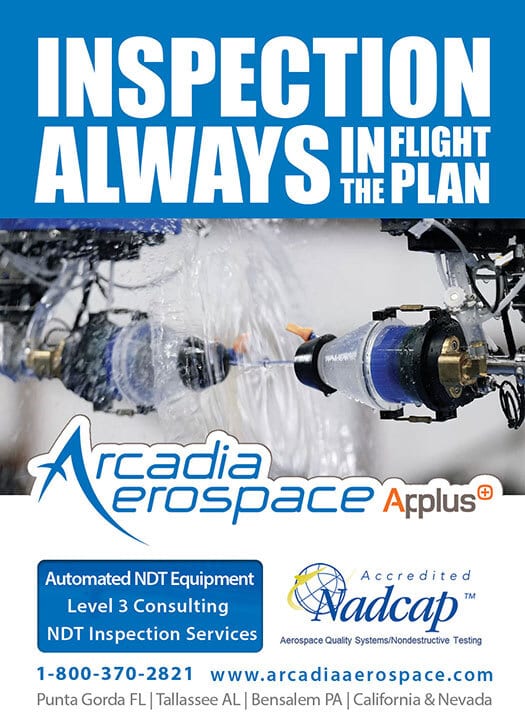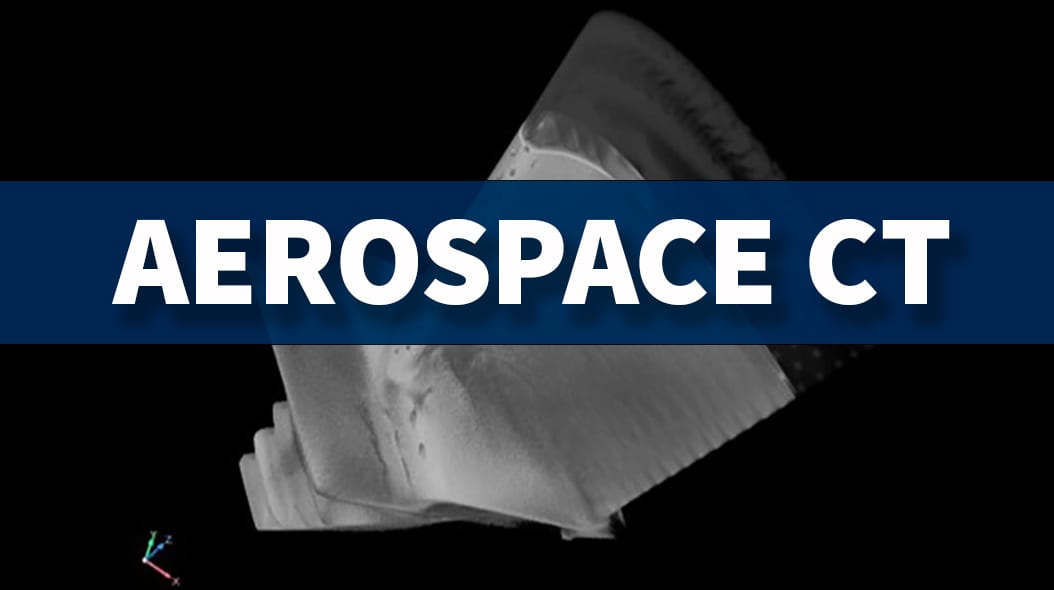xxxxxx xx
xxxxxxxxxx
NDT in Aerospace
aerospace
aerospace
H2 Deck By Bold Name
h2 xxxxxx
H1 xxxxxx
h2 xxxxx

I am happy to report to you that we are safer in 2025 than we were in 1972. By Donald Locke
Aviation Manufacturing Quality and Nondestructive Inspection Special Processes
Quality of all aerospace special processes are critical processes that help ensure your personal safety. YES, you specifically are safer every time you fly because most every company worldwide has a quality management system and special inspection process that detects critical flaws before production parts are assembled in to the aircraft. Every part is critical on an aircraft, even if every part is not labeled flight critical. Every inspection, forgings, castings, machined parts, composites, all parts are manufactured and inspected to specific requirements.
This article is a short reminder that success in the Quality and NDI world never rests on the past. I have audited 70 aerospace manufacturing companies in the past two years. I have been doing similar work focused on quality and NDI since 1972. I am happy to report to you that we are safer in 2025 than we were in 1972. We have a great history of flight safety and manufacturing quality. Accidents and poor quality make the news and this article will share some quality issues but the good news is quality is great and improving.
With over 50 years in this business of inspection I know NDI and I know what poor quality looks like. Both Major and Minor nonconformances (NCR) are seen in most every audit. In fact, it is rare to have ZERO NCR when auditing this critical process. All in the quality and NDI business know the object is ZERO NCRs and years of experience and good quality do not automatically result in this objective. Hundreds of quality managers and NDI Responsible level III certificate holders focus year after year on these processes and continuous improvement. Still, we are human and I personally do not think AI will get us to ZERO.
It’s not just human factors but this is a critical part of each of these special processes. Requirements can be crystal clear with drawing and wording flowed down to the specific certified tech doing an inspection and still sometimes the tech makes a mistake. This mistake can be minor or major. Any mistake in an inspection process that could potentially have product impact is a MAJOR NCR / issue. Majors get everyone’s attention and required immediate action to understand the root cause of the issue and prevent this from repeating.
Examples of repeat NCR for example are companies doing the paperwork to report and document an NCR, minor or major but not really making any change the company’s process. Any repeat minor is a major issue as everyone knows solutions and change need to be real for improvements to be real. Improvement in the quality and inspection process typically cost the company. The cost typically involves time, training and change management. Internal audits are a requirement but most NCR are found by external auditors; they have a fresh set of eyes witnessing the inspections. No name but notice these NCR documented in companies that have proven approved accredited quality and NDI processes:
- Corrective action on the penetrant inspection booth was not corrected.
- No process control for the critical radiographic / X-ray film processor.
- Quality indicators for X-ray placed over the critical area to be evaluated.
- The wrong sensitivity level penetrant used for critical aerospace parts requiring level III sensitivity.
- Certified level II with required corrective vision did not use corrected vision when evaluation parts.
- Certified level II technician did not let his eyes adjust to the dark inspection booth.
- Quality manger did not provide objective evidence for each item as required in the audit checklist.
- Quality manger has no document process defining fraudulent activity.
- Quality manager failed self-audit documentation on time.
- Internal audits are done by designated people that have no documented training on auditing.
- Personnel doing etching have no documented training to perform this critical process.
- Stamp control is out of control with inspection stamps left out for anyone to misuse.
- Two different stamps were used to document an inspection with no traceability to who did what part in a lot of 100 parts.
- Old outdated calibration sticker was still on the component requiring calibration.
- Approved procedure for magnetization of parts was not followed completely.
- Process control of the in use magnetic particle bath was not compared to the original bath.
- Quality indicator cause requirements were not checked.
- Required quality indication on the AS5282 ring were not recorded accurately.
- Daily quality log errors were not corrected per the company quality process.
- UT scanning did not overlap as required.
These audit finding are just examples and there are many more just in my personal audit. There are many approved lead auditors finding the same and other NCRs. This may cause you great concern but I hope you will read on to the end. NCRs are common and a formal way to manage issues and document root causes and corrective actions. NCRs HELP, really! No one wants an NCR when I show up but I tell everyone that we are all on the same team and we all want to produce the very best quality products and the NDI process helps us identify issues early so defective parts rarely get put onto or into an aircraft. We want to find every issue in every special process. An audit is just on opportunity and one data point for management to use for improvement.
I fly almost every week! I totally trust our companies around the world as I have witnessed these processes in 13 countries outside the U.S. in the last two years and I’m happy to report the quality processes and NDI are great. Even with the snapshot of NCRs in the article there are thousands of checklist items for each of the NDI processes and a very high percentage of these critical process are done every day without issues. Probably a percentage in the high 90s.
Our probability of detection (POD) is good. How good is debatable and the topic of another article. I hope you feel safe flying and appreciate what it takes to have a quality product. I hope this article sparks an interest and you will share perspective on the current state of quality you have witnessed. Our probability of improvement (POI) is very high as we all stay committed to open auditing and reporting and continuous learning. Ethics play a huge part in these process improvement challenges and I am happy to close with a good report on what I have witnessed in the 70 audits from 2023 to today.

